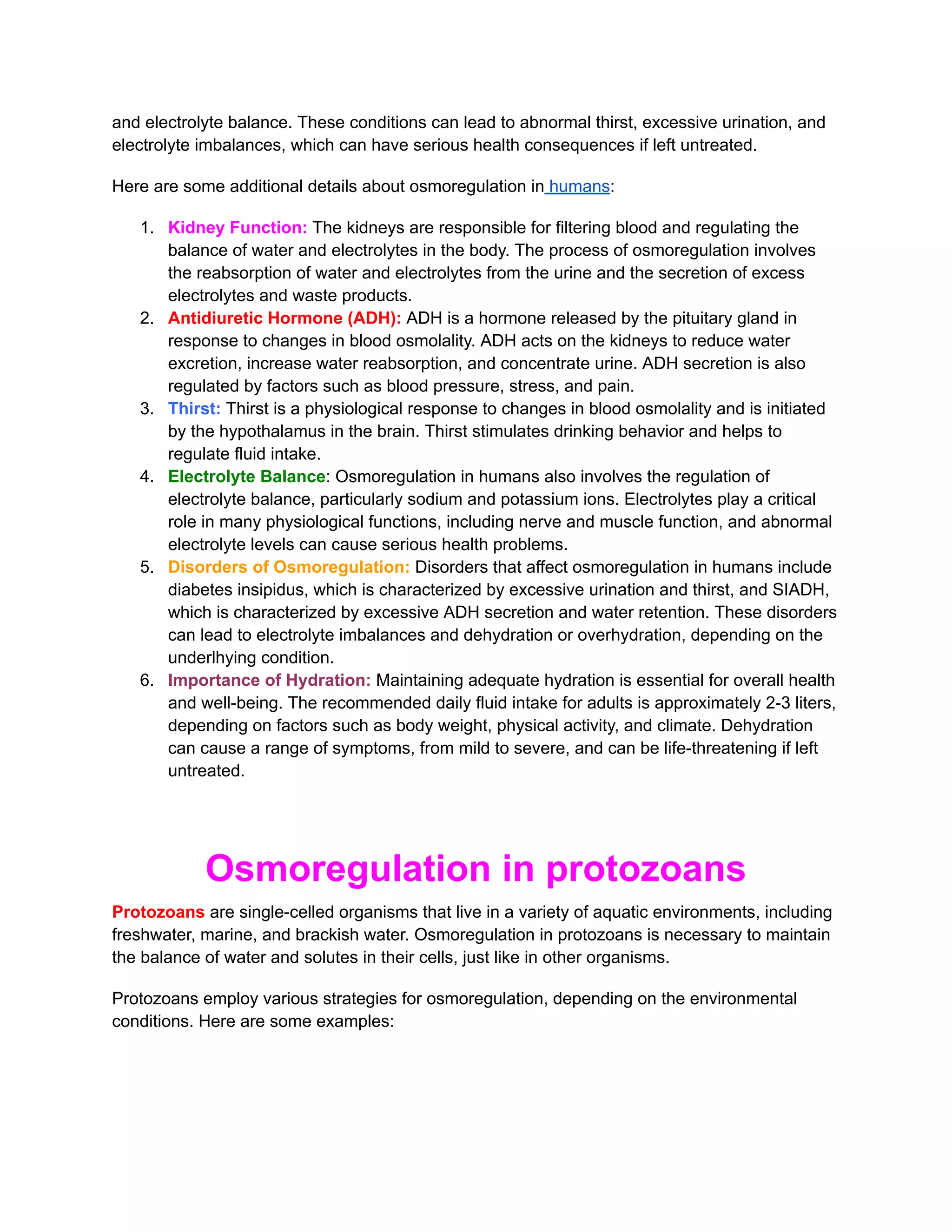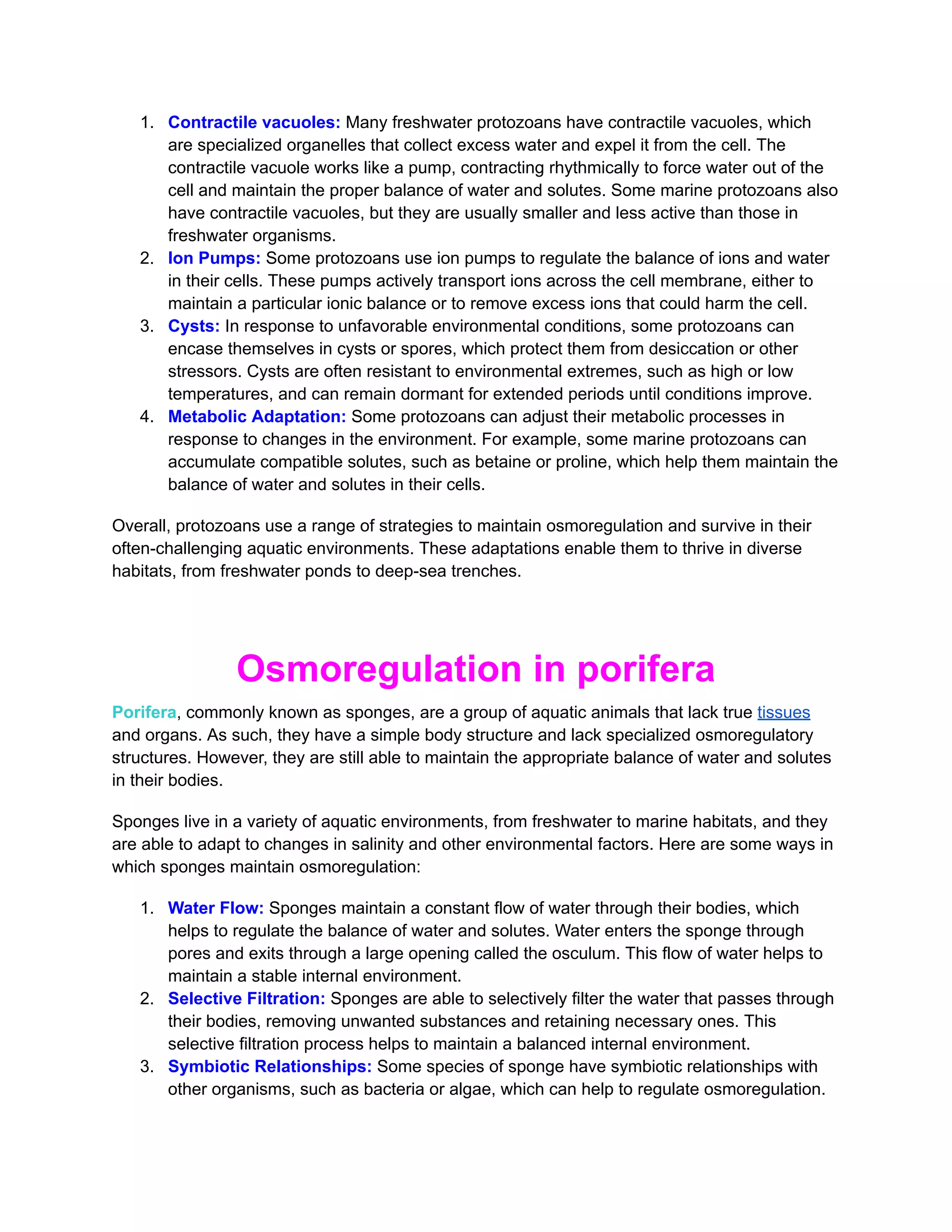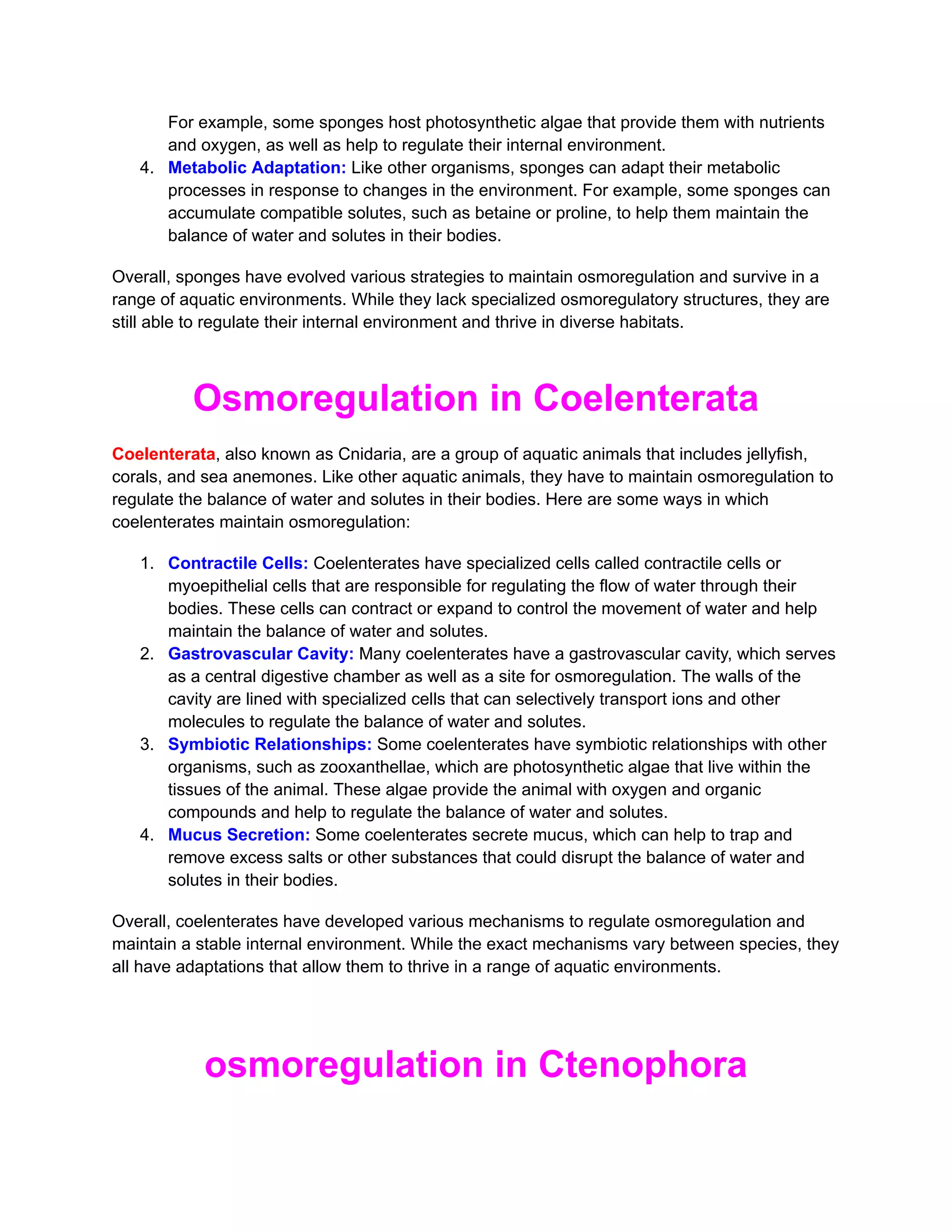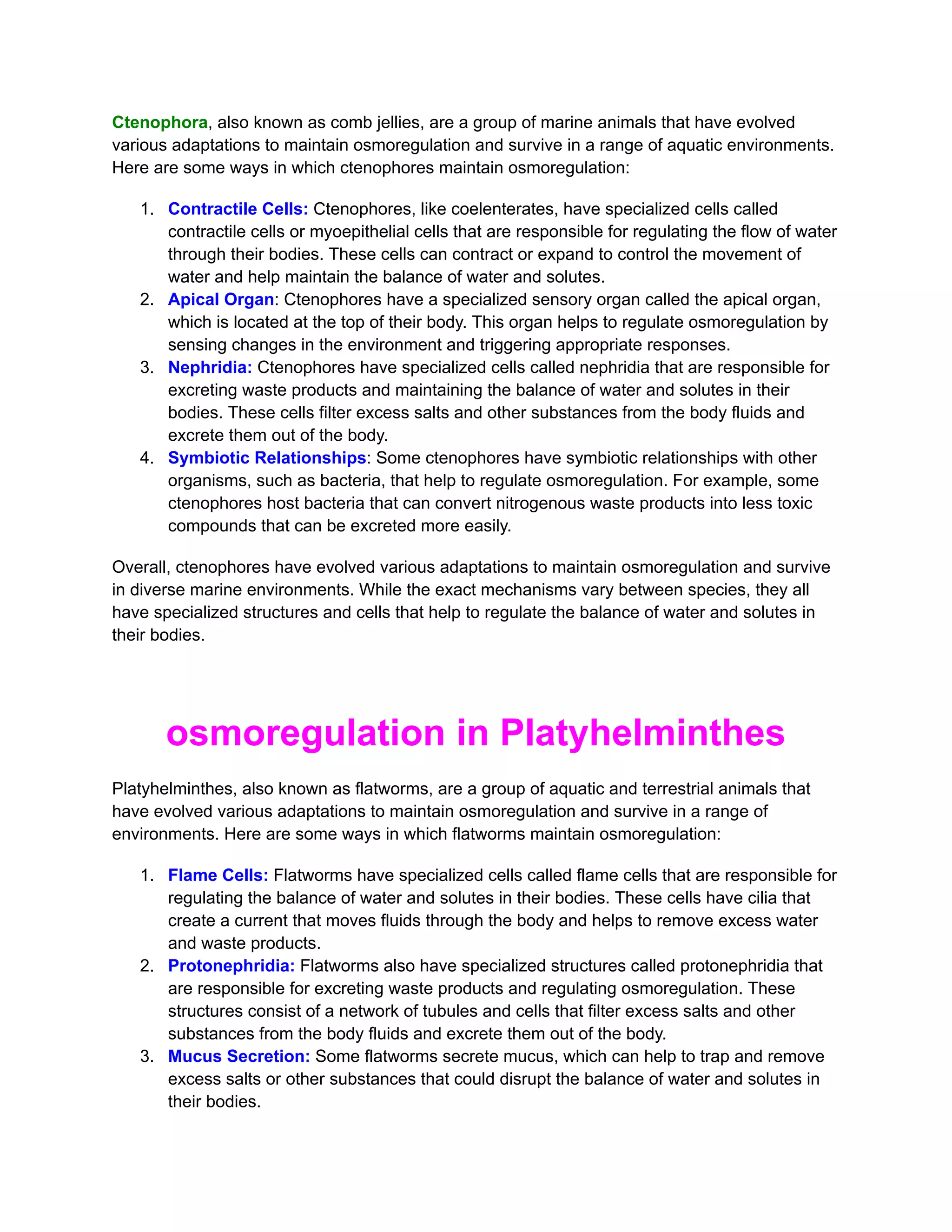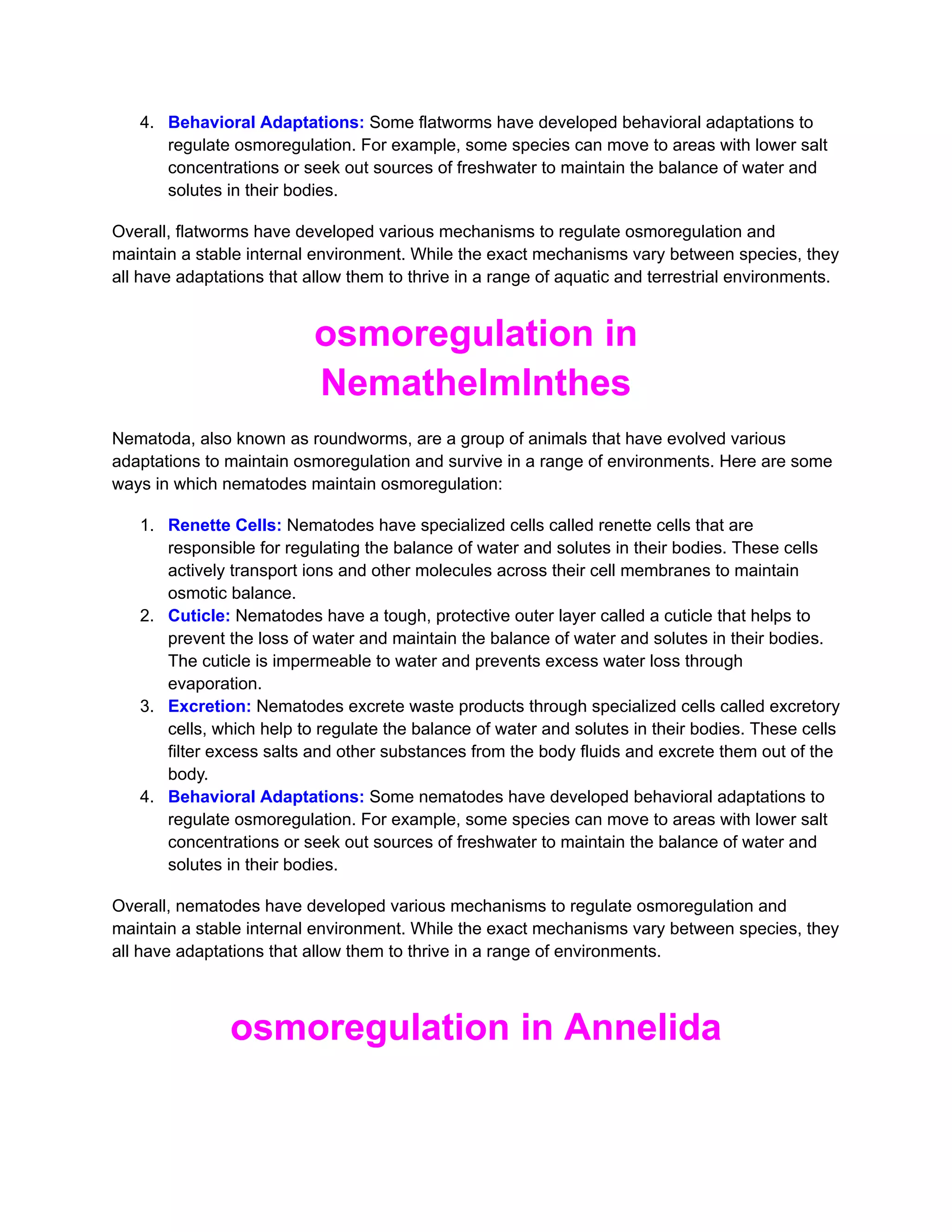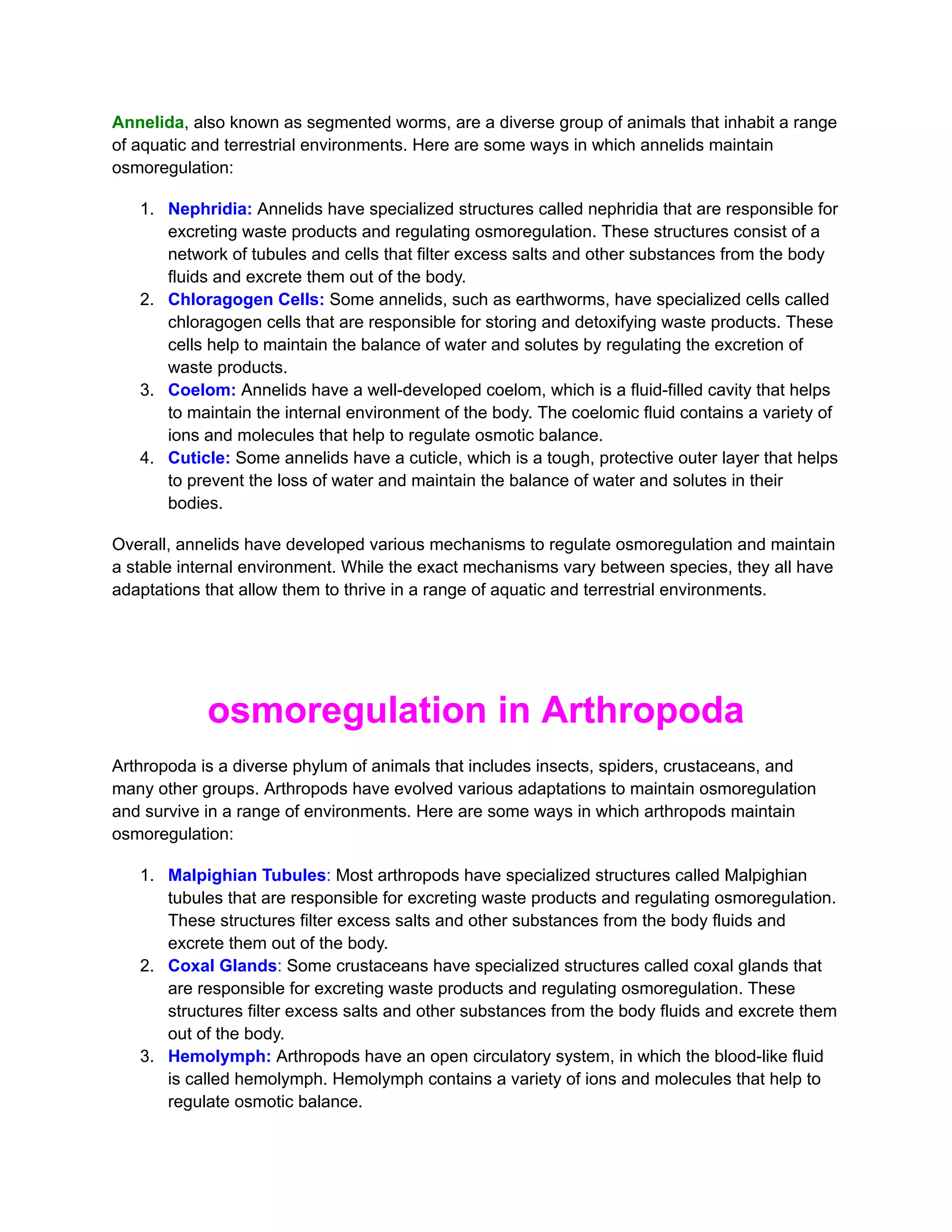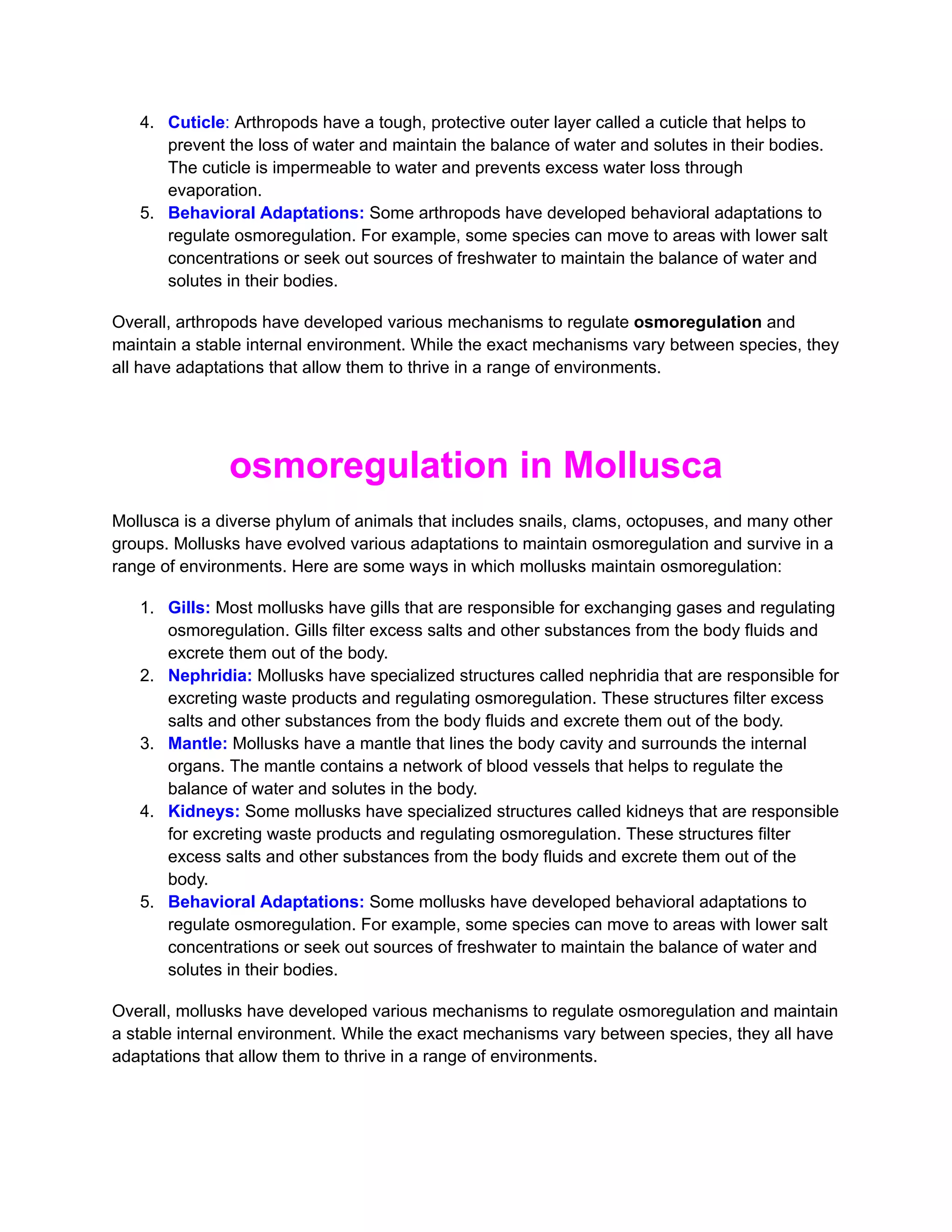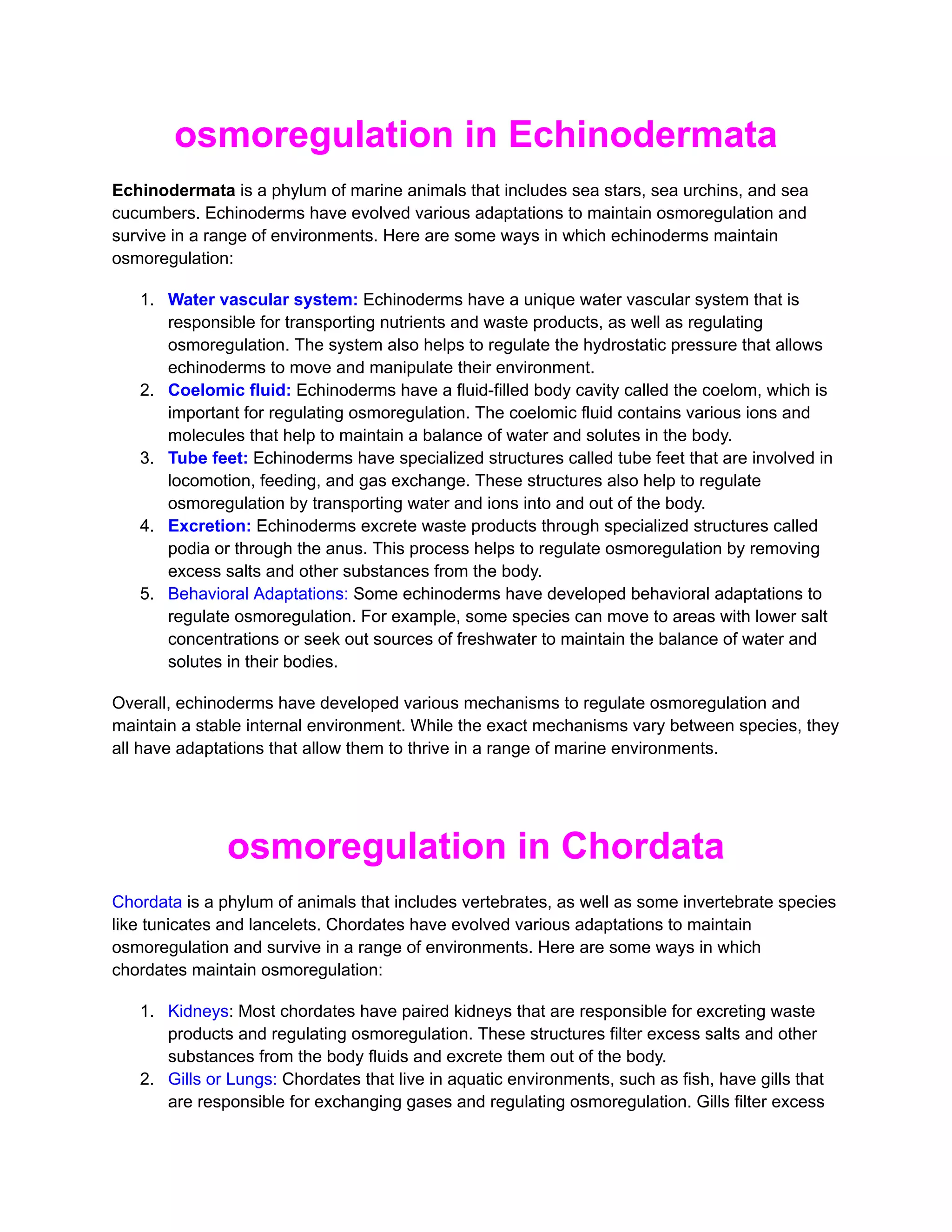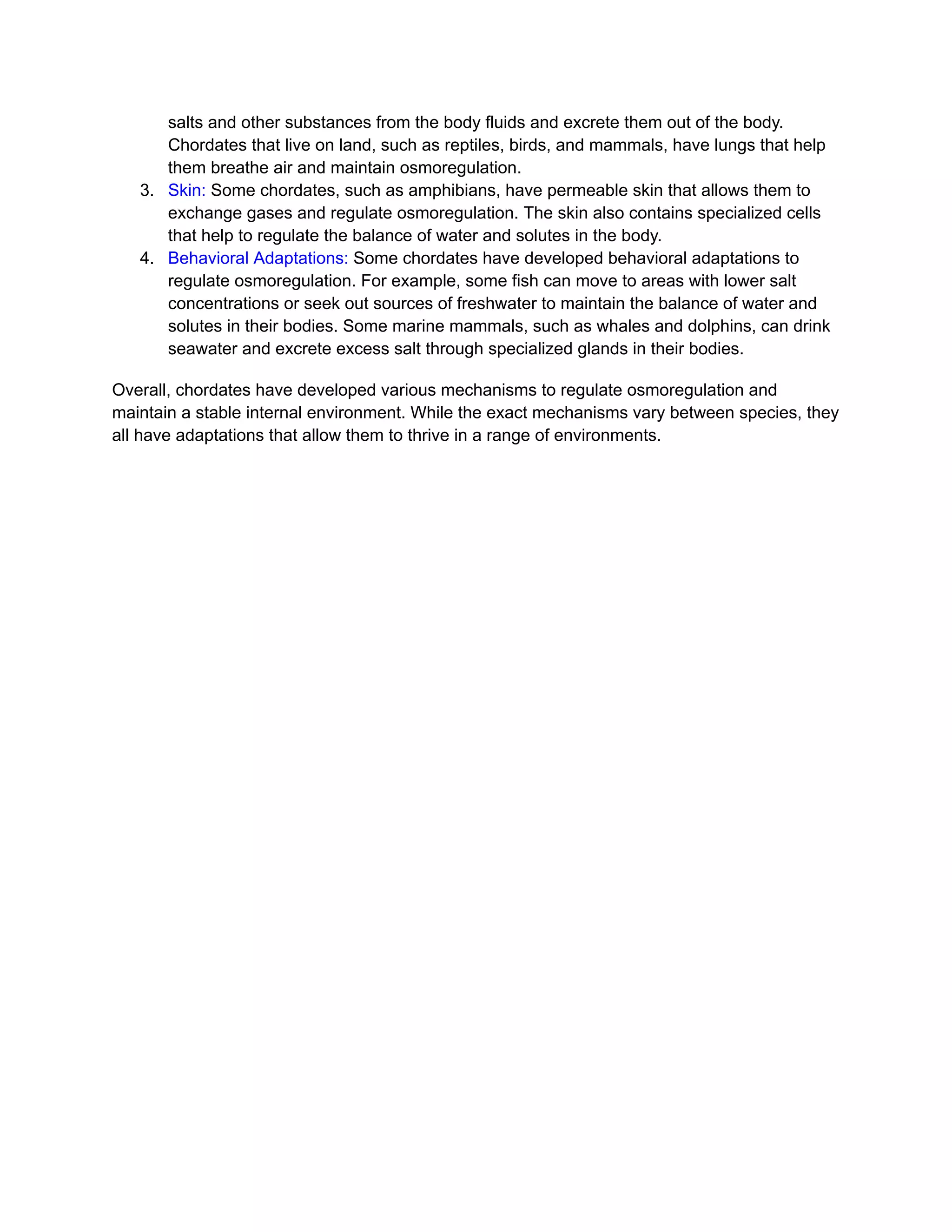Osmoregulation is the process by which organisms regulate water and solute concentrations to maintain homeostasis, crucial for both aquatic and terrestrial life. Various adaptations across species, including specialized organs and hormones like antidiuretic hormone (ADH), support this process. Disruptions in osmoregulation can lead to health issues in humans and other organisms, highlighting its significant role in survival.

![6. Osmoregulation and Human Health: Osmoregulation is essential for human health,
and disruptions in the body's water and salt balance can lead to health problems such as
dehydration, hyponatremia (low blood sodium), and hypernatremia (high blood sodium).
Osmoregulation in human
In humans, osmoregulation is primarily controlled by the kidneys, which regulate the balance of
water and electrolytes (such as sodium, potassium, and chloride ions) in the body. The kidneys
filter blood to remove waste products and excess water, while retaining essential nutrients and
electrolytes.
The hypothalamus in the brain also plays a critical role in osmoregulation by sensing changes
in blood osmolality (concentration of solutes) and initiating thirst and the release of antidiuretic
hormone (ADH) from the pituitary gland. ADH acts on the kidneys to reduce water excretion
and conserve water in the body.
In healthy individuals, the body's osmoregulatory system maintains a delicate balance between
fluid intake and excretion, ensuring that the body's water and electrolyte levels remain within a
narrow range. However, various factors can disrupt this balance, such as excessive sweating,
vomiting, diarrhea, or drinking too much or too little water.
Osmoregulation[/caption]
Dehydration is a common condition that results from a loss of water and electrolytes from the
body, leading to symptoms such as thirst, dry mouth, fatigue, and dizziness. In contrast,
overhydration can lead to a dilution of electrolytes in the blood and can cause symptoms such
as headache, nausea, confusion, and seizures.
Disorders of osmoregulation, such as diabetes insipidus and syndrome of inappropriate
antidiuretic hormone secretion (SIADH), can also affect the body's ability to regulate water](https://image.slidesharecdn.com/osmoregulationmechanismsandadaptationsinvariousorganisms-230428041319-e81fa5e7/75/Osmoregulation-Mechanisms-and-Adaptations-in-Various-Organisms-pdf-2-2048.jpg)
